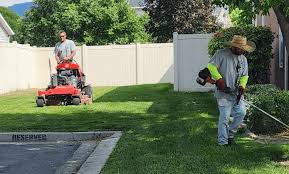Equipment for Restaurants: Essential Kitchen Equipment for a Successful Restaurant
The restaurant industry is fast-paced, competitive, and dynamic. One of the key factors that separate a successful restaurant from one that struggles to keep up is the quality of its equipment. Having the right equipment for a restaurant is crucial, not only for preparing food efficiently but also for maintaining hygiene, enhancing customer service, and ensuring that the kitchen staff can work seamlessly.
In this comprehensive guide, we will explore the essential kitchen equipment for restaurants, discussing the must-haves, why they are necessary, and how they contribute to the overall success of a dining establishment.
1. Cooking Equipment
At the heart of every restaurant kitchen is the cooking equipment. The quality and variety of your cooking appliances will determine the range and efficiency of your food preparation. Here are the essential pieces of cooking equipment that every restaurant needs:
Commercial Ranges
A commercial range is one of the most critical pieces of kitchen equipment for any restaurant. Whether you’re frying, sautéing, or boiling, a range is indispensable for preparing a wide array of dishes. There are gas and electric ranges, each with its own benefits. Gas ranges provide more precise heat control, while electric ranges tend to be easier to clean.
Ovens
Restaurants rely on ovens for baking, roasting, and broiling. Depending on your menu, you may need a variety of ovens:
- Convection Ovens: These ovens use fans to circulate hot air, cooking food evenly and more quickly. They are ideal for baking and roasting large quantities of food.
- Pizza Ovens: If your restaurant serves pizza, a specialized pizza oven can ensure quick cooking times and a perfect crust.
- Combi Ovens: These versatile ovens combine the functions of a steamer and a convection oven, giving you flexibility in food preparation.
Grills and Griddles
For restaurants that specialize in grilled dishes, investing in a high-quality commercial grill is crucial. Grills are perfect for steaks, burgers, vegetables, and other dishes that require direct heat. There are different types of grills, such as gas, electric, or charcoal, depending on your restaurant’s style.
Griddles are flat cooking surfaces that are excellent for cooking breakfast items like pancakes, eggs, and bacon. They are also useful for preparing sandwiches and other flat-cooked dishes.
Deep Fryers
Fried foods like French fries, chicken wings, and fish are popular in many restaurants. A commercial deep fryer allows you to fry food quickly and efficiently. It’s important to choose a fryer with a large enough capacity to meet the demands of your restaurant.
Steamers
Steamers are ideal for cooking vegetables, seafood, and other delicate dishes. They help retain the moisture and nutrients in food, making them essential for healthy cooking.
2. Refrigeration Equipment
Proper food storage is essential in maintaining food quality and safety in a restaurant kitchen. Refrigeration equipment ensures that perishable ingredients are kept at the right temperature to prevent spoilage and foodborne illnesses.
Walk-in Coolers and Freezers
Walk-in coolers and freezers are the backbone of restaurant refrigeration. These large, enclosed storage spaces allow you to store bulk quantities of ingredients, keeping them fresh for longer periods. Walk-ins are particularly useful for storing meats, seafood, dairy products, and other perishable items.
Reach-in Refrigerators
Reach-in refrigerators are smaller, upright units that are typically placed near food prep stations for easy access. They come in various sizes and configurations, including one-door, two-door, and even under-counter models.
Prep Tables with Refrigeration
These are workstations with built-in refrigeration compartments, often used in sandwich shops, pizzerias, and salad bars. They allow chefs to store ingredients within arm’s reach while preparing dishes, speeding up the process and maintaining food safety.
3. Food Preparation Equipment
Before any cooking begins, food needs to be prepped. This includes chopping, slicing, mixing, and measuring ingredients. The right food preparation equipment helps your kitchen staff work more efficiently and reduces the chances of injury.
Food Processors
A food processor is a versatile piece of kitchen equipment for restaurants. It can chop, slice, shred, and puree ingredients, making it invaluable for preparing vegetables, sauces, and soups.
Commercial Mixers
For bakeries, pizzerias, and restaurants that prepare large quantities of dough, a commercial mixer is a must. There are planetary mixers for mixing dough, cake batter, and sauces, as well as spiral mixers designed specifically for dough.
Slicers
A meat slicer is essential for delis, sandwich shops, and restaurants that need to slice meats, cheeses, and other ingredients thinly and consistently. Slicers come in manual and automatic varieties, depending on your needs.
Blenders
Commercial blenders are important for making smoothies, sauces, soups, and purees. High-powered blenders can quickly and efficiently blend large quantities of ingredients, saving time and effort in the kitchen.
Cutting Boards and Knives
While not machinery, high-quality knives and cutting boards are fundamental tools in any restaurant kitchen. Having the right knife for the job—whether it’s chopping vegetables or filleting fish—ensures precision and safety in food preparation.
4. Dishwashing Equipment
Cleanliness and hygiene are non-negotiable in the restaurant business. In addition to cleaning surfaces and equipment, it’s crucial to properly clean and sanitize dishes, utensils, and glassware.
Commercial Dishwashers
A commercial dishwasher is a necessity for maintaining cleanliness in a high-traffic kitchen. Depending on the size of your restaurant, you may need an under-counter dishwasher, door-type dishwasher, or conveyor dishwasher. These machines are faster and more efficient than home dishwashers, ensuring that you always have clean dishes and utensils ready for service.
Sinks and Faucets
Even with a commercial dishwasher, some items need to be washed by hand. A three-compartment sink is standard in most restaurant kitchens. It allows you to wash, rinse, and sanitize dishes in separate compartments to comply with health regulations.
5. Storage Equipment
Proper storage solutions are essential for organizing your kitchen and keeping ingredients and supplies easily accessible. The right storage equipment can improve efficiency and help prevent cross-contamination.
Shelving Units
Stainless steel shelving units are commonly used in restaurant kitchens for storing dry goods, utensils, cookware, and other supplies. These shelves are durable, easy to clean, and resistant to rust and corrosion.
Storage Containers
Food storage containers are used to store ingredients and prepared food. They come in various sizes and materials, including plastic, glass, and stainless steel. Properly labeled containers help maintain organization and reduce food waste.
Utility Carts
Utility carts are used to transport food, dishes, and supplies throughout the kitchen. They are especially useful in large kitchens where moving items efficiently is important.
6. Beverage Equipment
For restaurants that serve drinks—whether alcoholic or non-alcoholic—beverage equipment is essential for both the front and back of the house.
Coffee Makers
Coffee is a staple in many restaurants, especially for breakfast and dessert. A commercial coffee maker can brew large quantities of coffee quickly and keep it warm throughout service.
Juice Dispensers
Juice dispensers are ideal for serving fresh juice at buffets, breakfast bars, or beverage stations. They keep juice chilled and easy to pour, ensuring that customers have access to refreshing drinks.
Soda Fountains
For fast-food restaurants or establishments that offer self-serve beverages, a soda fountain is essential. These machines allow customers to easily access a variety of soft drinks.
Ice Machines
Restaurants go through a lot of ice, whether it’s for drinks, food displays, or keeping ingredients cold. An ice machine ensures that you always have a steady supply of ice on hand. Make sure to choose a machine that fits the size and demands of your restaurant.
7. Point of Sale (POS) Systems
While not kitchen equipment, a reliable point-of-sale (POS) system is critical for the smooth operation of any restaurant. A POS system allows you to track sales, manage orders, and monitor inventory in real time. Modern systems also integrate with kitchen display systems (KDS), which streamline communication between the front-of-house and back-of-house staff.
8. Safety and Cleaning Equipment
Maintaining a safe and clean kitchen is not only essential for compliance with health regulations, but it also contributes to the overall efficiency and morale of your staff.
Fire Suppression Systems
Most restaurants are required to have a fire suppression system installed above cooking equipment to ensure the safety of staff and customers. These systems automatically extinguish fires in the event of an emergency.
Mops, Brooms, and Cleaning Supplies
Keeping the kitchen clean is a priority in every restaurant. Make sure your kitchen is equipped with mops, brooms, and the appropriate cleaning supplies to maintain a safe and hygienic environment.
Conclusion
Choosing the right equipment for restaurants is one of the most important investments you will make as a restaurateur. From cooking and refrigeration to food preparation and storage, each piece of equipment plays a crucial role in the day-to-day operations of your kitchen. Well-chosen, high-quality kitchen equipment not only improves the efficiency of your staff but also enhances the quality of the food you serve, leading to happier customers and a more successful restaurant. When selecting kitchen equipment for restaurants, always prioritize durability, functionality, and compliance with health and safety standards to ensure long-term success in the competitive restaurant industry.







